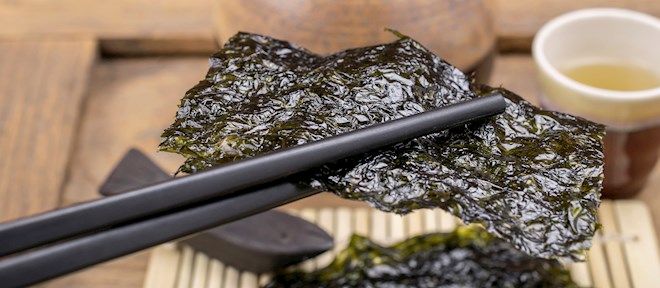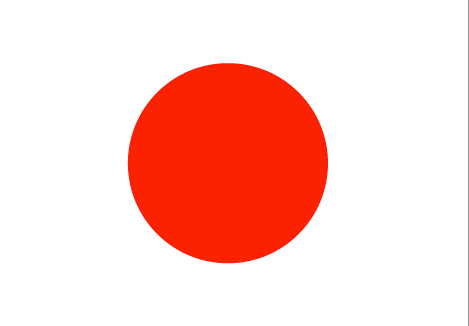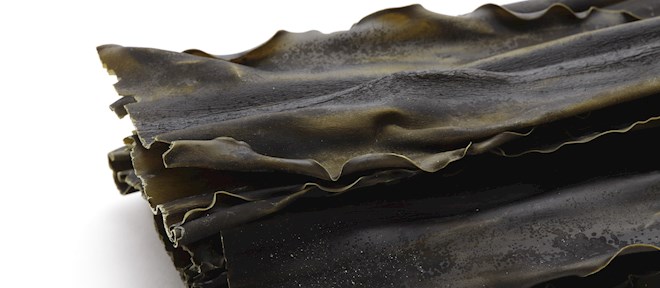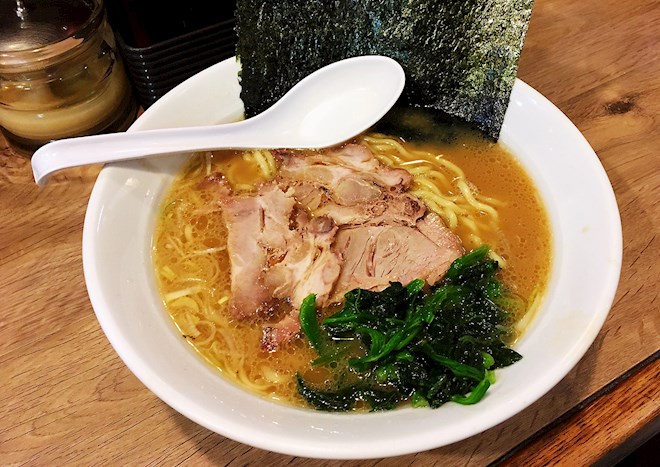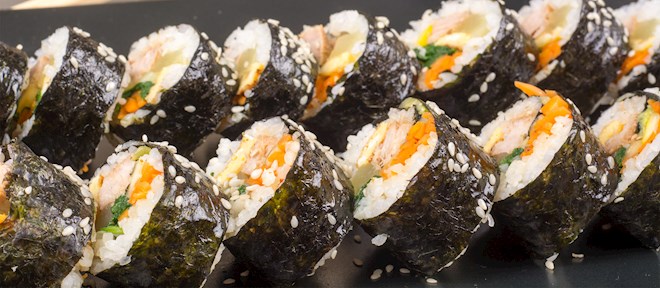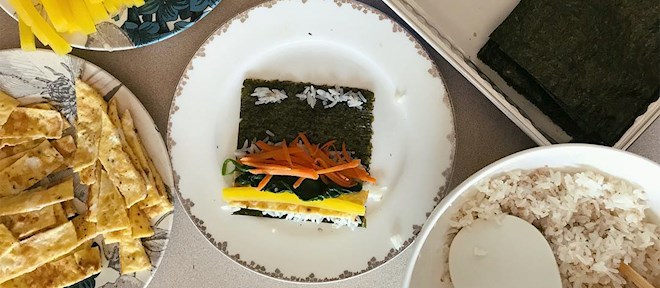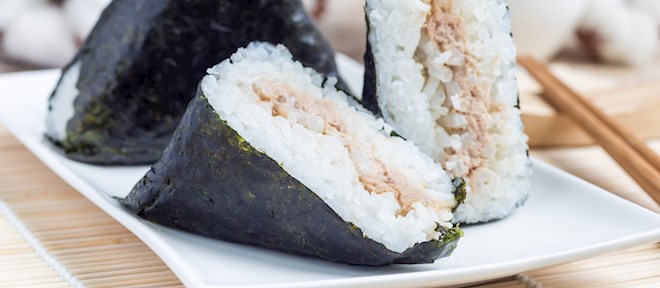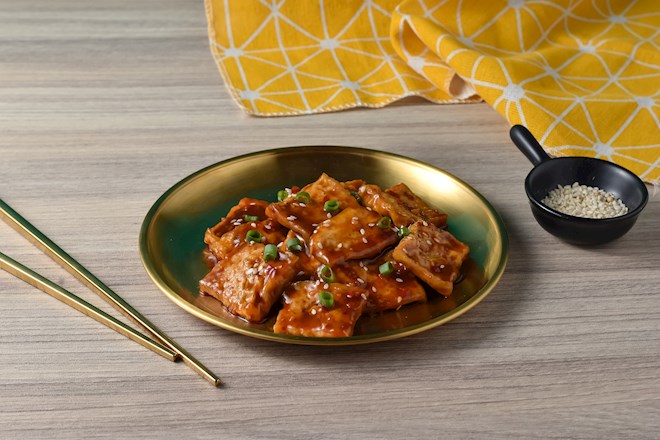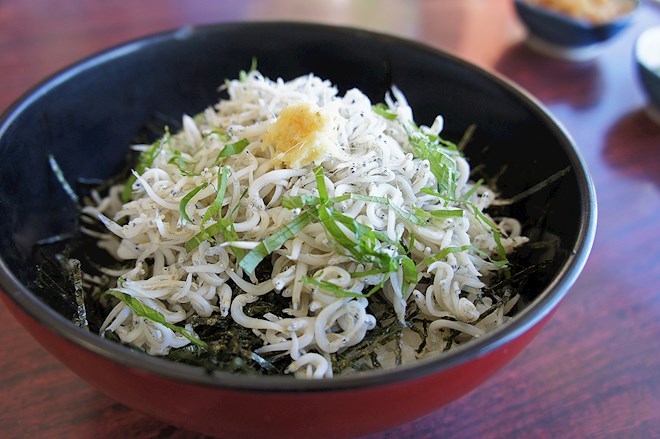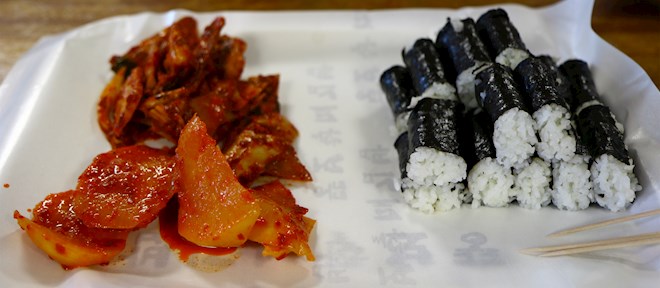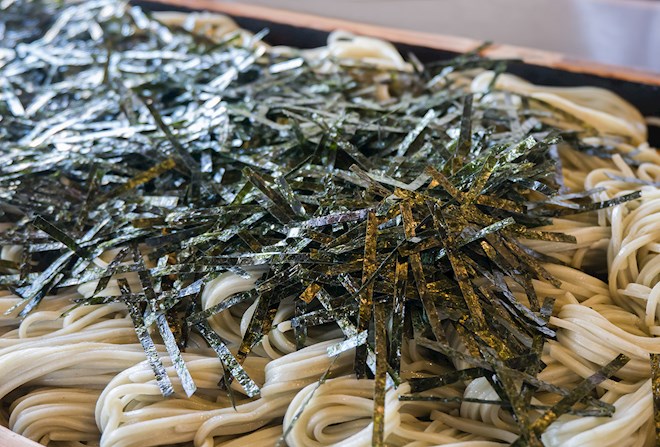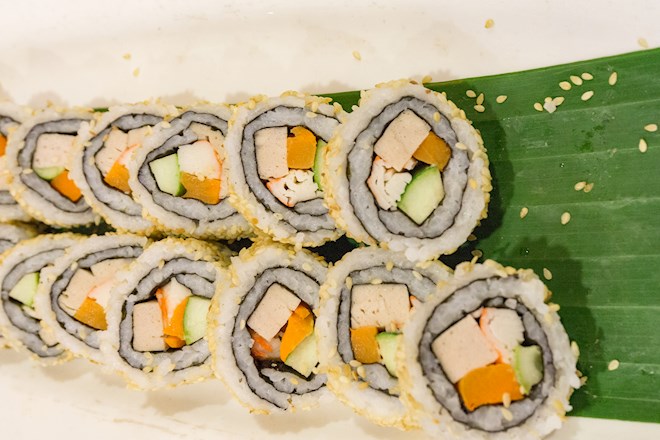Seaweed
Seaweeds & producers

Seaweeds

Dulse
Resembling a leafy red lettuce, dulse or palmaria palmata is an edible dried seaweed product from Northern Ireland. It can be consumed on its own as a snack, but it is sometimes also used as a unique pizza topping. When fresh and... READ MORE
Welsh Laverbread
Although it contains the word 'bread' in its name, it has absolutely nothing to do with it because this is a fine black seaweed (Laver) which is harvested on the Welsh shores. It is unique because it is the only seaweed that is just one cell thick... READ MORE
Karengo
Karengo is a type of edible seaweed, more precisely red algae of the Porphyra genus, which is indigenous to New Zealand. It ranges from dark green to purple in color and has a firm texture and mild flavor. After it is collected at rough-w... READ MORE
Lumi cevata
Lumi cevata is a type of edible seaweed from Fiji, specifically from the island of Gau. It's made from Hypnea Pannosa seaweed, commonly found in saltwater lagoons. The name "cevata" refers to its congealed state after cooking, which resembles a pi... READ MORE
Lumi karo
Lumi karo is a lesser-known type of seaweed delicacy from Gau Island in Fiji, belonging to a family of various Lumi seaweed delicacies from the region. It belongs to the algae species Acanthophora. This particular type of Lumi is found on shores, ... READ MORE
Dishes with Seaweed
Yokohama-Style Ramen

Yokohama-style ramen or iekei ramen is a Japanese type of ramen originating from the Yokohama area and dating back to 1974. The dish consists of thick noodles and a stock that's a mix of creamy tonkotsu (pork broth) and soy sauce. The top... READ MORE
Chamchi gimbap

This gimbap (Korean rice roll) is made with canned tuna. Apart from rice and fish, the fillings may include other ingredients that are typically used in gimbap such as fresh or pickled vegetables, eggs, or fish cakes, while the tuna is of... READ MORE
Mayak gimbap

Mayak is a popular variety of South Korean rice rolls (gimbap). These mini versions of the standard roll consist of rice, toasted seaweed, and fillings that traditionally include carrots, pickled radish, and spinach. Unlike the traditional gimbap,... READ MORE
Gimbap

Often referred to as Korean sushi, gimbap is a Korean dish consisting of seaweed (gim), seasoned rice (bap), and other, optional ingredients that are usually rolled, sliced, and served. Almost anything can be added to th... READ MORE
Samgak gimbap

Samgak is a triangle-shaped variety of gimbap—South Korean rice roll. It consists of various fillings that are neatly placed inside a piece of triangle-shaped rice. The pouches are then wrapped in seaweed (gim) and are typically add... READ MORE
Rolled Omelet (Gyeran mari)

Gyeran mari is a type of South Korean rolled omelet that usually incorporates various additional ingredients. The dish is made with lightly beaten eggs, while the fillings typically include finely sliced or diced scallions, carrots, peppers, mushr... READ MORE
Hoedeopbap

Hoedeopbap is a Korean rice bowl that is topped with raw fish and slices of fresh vegetables. Although similar to the Japanese kaisendon, this Korean version is finished off with the addition of a sweet and spicy sauce that usually combin... READ MORE
Braised Tofu (Dubu jorim)

Dubu jorim is a traditional South Korean dish consisting of braised tofu. The dish is usually made with a combination of firm tofu, soy sauce, honey, garlic, onions, hot peppers, gochugaru, anchovy stock (anchovies, kelp, and water), and toasted s... READ MORE
Shirasu don

Shirasu don is a traditional dish originating from the Kanagawa region. It’s a specialty of Chigasaki, Enoshima Island, and Kamakura. The dish is made with shirasu – baby sardines, sand lances, and herring. The fish are eaten ... READ MORE
Chungmu gimbap

As the name suggests, this gimbap (kimbap) variety originated in Chungmu—present day Tongyeong City. These simple rolls are prepared with rice that is wrapped in toasted seaweed. Usually thin and almost bite-size, the rolls never in... READ MORE
Hegi soba

Hegi soba is a traditional noodle dish belonging to the group of soba dishes and originating from the Uonuma area of Niigata Prefecture. It consists of buckwheat soba noodles and funori seaweed. The noodles are boiled, mixed with the seaweed, woun... READ MORE
Stir-Fried Kelp (Dassima-bokkeum)

Dassima-bokkeum is a traditional South Korean dish of stir-fried kelp. The dish is usually made with a combination of kelp, garlic, onions, soy sauce, oil, and sugar. The kelp is cooked in vegetable stock and cut into squares before it's stir-frie... READ MORE
Nude-gimbap

Nude gimbap is a variation of a traditional Korean rice roll in which toasted seaweed (gim) is wrapped inside the rice—leaving the rice exposed, hence the name. Apart from that, nude gimbap typically incorporates standard fillings that mainl... READ MORE




